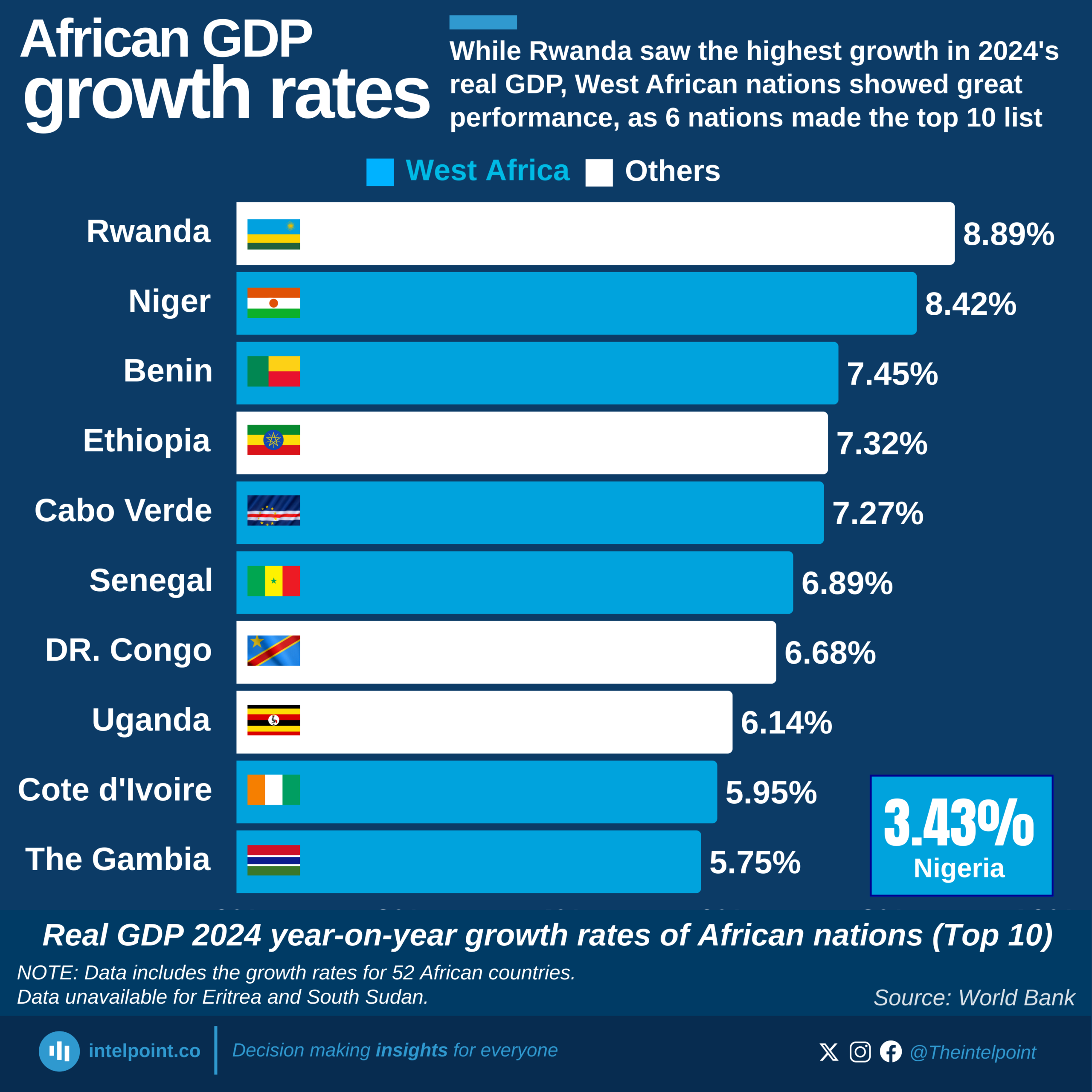Rwanda’s economy has been revised upward after a rebasing exercise, with Gross Domestic Product (GDP) for 2024 now estimated at $14.8 billion (Frw 21.5 trillion), compared with the previously published $12.6 billion (Frw 18.3 trillion).
The recalibration reflects stronger contributions from services, which accounted for 52% of output, while agriculture contributed 21% and industry 22%.
The National Institute of Statistics of Rwanda (NISR) released the revised estimates on Wednesday alongside second-quarter GDP data.
Yusuf Murangwa, the finance minister, said the update, which resets the base year from 2017 to 2024, improves the accuracy of Rwanda’s economic assessments. “Rebasing to a 2024 base year ensures our estimates are grounded in comprehensive and current economic data, enhancing evidence-based planning and investment,” Murangwa noted.
The East African country usually revises its economic data every three years, but the 2020 exercise was postponed due to COVID-19 disruptions. According to NISR, the economy expanded by 6.3% in 2024 under the new framework.
Growth momentum slows to 7.8% in Q2 2025
Fresh figures show growth easing in the second quarter of 2025, with GDP rising 7.8% year-on-year compared with 10.2% in the same period of 2024. The slowdown was largely due to weaker growth in industry and services, although agriculture provided some offset. In nominal terms, GDP at current market prices reached ($4 billion) Frw 5.8 trillion in Q2 2025, up from ($3.3 billion) Frw 4.9 trillion a year earlier.
Agriculture grew by 8% during the quarter, double the rate recorded a year earlier, supported by a 3% rise in food crops and a 42% surge in exports. Coffee production jumped 121%, though tea output declined 9%.
Industry expanded 7%, down sharply from 13% in Q2 2024. Gains were driven by a 31% increase in mining and quarrying, 5% growth in construction, and steady advances in manufacturing, including food processing, chemicals, plastics, and nonmetallic minerals.
Services, which remain one of the pillars of Rwanda’s economy, grew by 9% in Q2, slowing from 12% in the same quarter last year. Retail trade, ICT, and financial services all posted solid growth, but hotels and restaurants contracted 7% while air transport fell 13%, highlighting weaker tourism inflows.
Analysts note that softer foreign capital inflows, particularly from tourism and exports, have not kept pace with rising import bills, putting pressure on the Rwanda franc. The currency had depreciated by almost 4% against the U.S. dollar as of mid-August.
Meanwhile, consumer prices eased slightly to 7.1% year-on-year in August, from 7.3% in July, though food inflation, a key driver of inflation, continued to inch higher.
NB: The local currency figures were converted to their US dollar equivalent using Fwr 1,447/$1 as of September 17, 2025.










